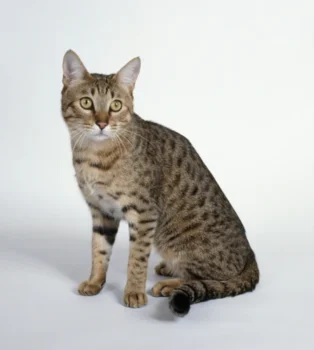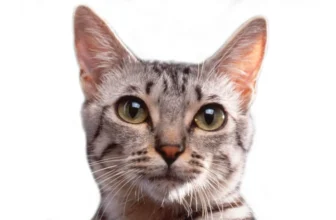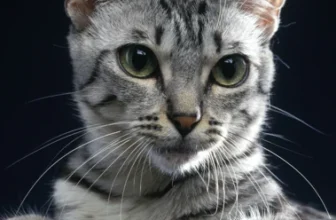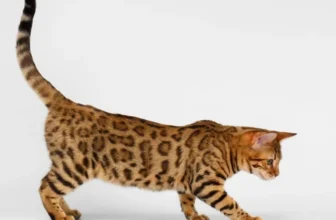As a cat lover, have you ever come across the unique and stunning California Spangled cat breed? These cats are renowned for their gorgeous coat patterns, distinctively muscular body structure, and lively personality. However, what sets these cats apart from the rest is their specific traits that breeders strive to enhance and maintain through selective breeding. In this article, we will explore the intricate process of breeding for specific traits in California Spangled cats, from understanding the desired traits to developing a successful breeding strategy and ensuring healthy breeding. Whether you are a seasoned breeder or simply curious about this fascinating breed, join us as we delve into the world of California Spangled cats.
Understanding Specific Traits
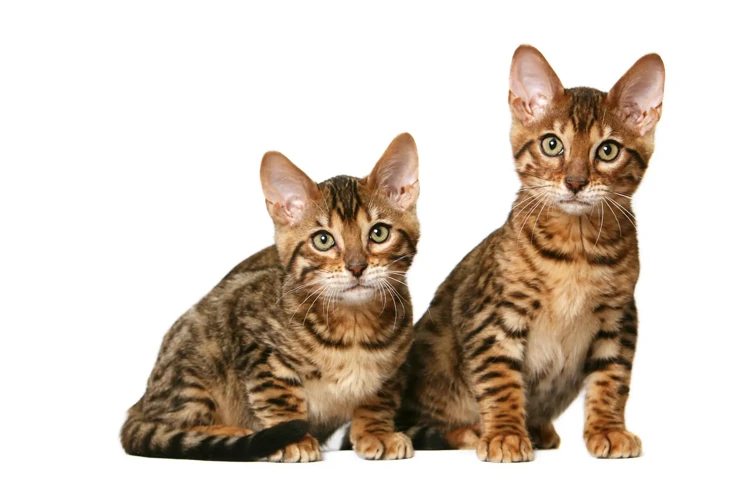
Understanding the specific traits of California Spangled cats is crucial for successful breeding. There are several important traits to consider when developing a breeding strategy, such as fur, color, size, and temperament. Each trait is unique and affects the overall appearance and personality of these highly sought-after cats. It’s important to understand these traits in order to breed cats with desirable characteristics. To learn more about the genetics behind these traits, check out our article on California Spangled cat genetics. Or if you want to review California Spangled cat pedigrees, you can visit our article on California Spangled cat pedigrees.
Fur
The California Spangled cat is known for its unique, spotted coat that resembles that of a wild leopard. The fur of a California Spangled cat is thicker and denser than that of an average domestic cat, giving it a luxurious, soft texture. In order to breed California Spangled cats with the desired fur characteristics, breeders need to understand the different types of fur and how to achieve the desired look.
Fur Types
California Spangled cats have short hair, so the focus is on achieving the right texture and pattern. There are several different types of fur patterns that breeders may look to produce in their cats. These include:
| Fur Type | Description |
|---|---|
| Ticked Tabby | Each hair is banded with different colors, giving a salt and pepper appearance |
| Classic Tabby | Dark stripes swirl around a lighter background color |
| Spotted Tabby | Large, rounded spots on the fur rather than stripes |
Fur Color
Just as important as the fur pattern is the color of the coat itself. California Spangled cats come in a variety of colors, including black, brown, silver, and gold. Breeders may aim to produce cats with certain colors that are in demand or breed for specific genetic combinations that result in unique colors.
Breeding for Fur Characteristics
When breeding for a specific coat appearance, it is important for breeders to consider the genetics of the cats involved. Some traits can be dominant or recessive, and others may be carried without being expressed. Breeders who wish to produce specific fur types or colors must carefully select cats for breeding to achieve the desired result.
Additionally, inbreeding can have a negative impact on the coat quality and result in genetic disorders. Breeders must take care to avoid excessive inbreeding and use genetic testing to ensure that their cats do not carry any harmful mutations that could be passed on to their offspring. For more information on genetic testing, check out our article on California Spangled cat genetic testing.
Conclusion
Achieving the desired coat appearance in California Spangled cats involves not only selecting cats with desirable patterns and colors, but also careful attention to genetics and breeding methods. By taking these factors into consideration and seeking veterinary care, breeders can help ensure that their cats are healthy and have the distinctive, luxurious fur that is a hallmark of the California Spangled breed. For more information on breeding tips and inbreeding, check out our articles on California Spangled cat breeding tips and the impact of inbreeding on California Spangled cats.
Color
In breeding California Spangled Cats, the color of the cat is another essential trait to consider. With a unique wildcat look, the California Spangled Cat comes in different colors that make them stand out. The dominant colors of this breed are brown, black, silver, and bronze. However, breeders can develop different colors and patterns through strategic breeding.
Breeding for Color Variations
To breed for specific fur colors in California Spangled Cats, breeders need to understand the genetics behind coat color. The coat color is determined by the cat’s genes, which come from both parents. Each gene has different alleles, and it is crucial to understand the different combinations that produce specific colors.
There are different variations of colors and patterns that can be achieved by breeding California Spangled Cats. One of the most common variations is the classic tabby pattern. This pattern usually includes dark stripes on a lighter background, creating a stunning visual effect.
Another popular variation is the colorpoint, which produces a lighter body with darker extremities, such as the nose, ears, and tail. This variation is usually found in Siamese cats, but breeders can develop it in California Spangled Cats through crossbreeding.
Breeding for specific colors and patterns requires careful planning to ensure healthy offspring. Breeders need to take into account possible genetic defects that may occur due to inbreeding or genetic disorders inherent in the breed. Genetic testing is an essential aspect of breeding to ensure healthy kittens and avoid any genetic disorders.
Genetic Testing
Genetic testing is an essential step in breeding for specific colors in California Spangled Cats. Breeders must test for various genetic disorders, such as hypertrophic cardiomyopathy, which is a heart disease common in this breed. Genetic testing can help identify carriers of the trait and help breeders make informed decisions in selecting breeding pairs.
Genetic testing can help breeders avoid inbreeding the cats, which can lead to genetic defects and inherited diseases. Inbreeding should be avoided by ensuring the cats used for breeding come from different lineages and are genetically diverse.
Conclusion
Breeding California Spangled Cats for color variations is a delicate process that requires genetic testing to ensure healthy offspring. Breeders must carefully select breeding pairs to produce kittens with the desired color and pattern variations while avoiding inbreeding and genetic disorders. Understanding the genetics of coat color is essential, and breeders must take the necessary steps to ensure the cats used for breeding are healthy and genetically diverse. For more information about genetic disorders and inbreeding in California Spangled Cats, check out our articles on California Spangled Cat Genetic Disorders and California Spangled Cat Inbreeding Impact.
Size
When breeding California Spangled Cats, size is another crucial trait to consider. The breed standard calls for a medium to large size cat, with a weight range of 8 to 15 pounds. It is essential to ensure that the breeding cats are within this range to produce healthy litters. Here are some tips to consider when breeding for size:
- Choose Breeding Cats with Appropriate Size: To ensure the kittens are of the appropriate size, the breeding cats should be medium to large themselves. Breeders should avoid using smaller cats as they may produce smaller offspring.
- Monitor Growth: Monitor the growth of kittens right from birth. They should be steady in their growth curve, and any deviations from it should be addressed with the vet to ensure they grow up healthy.
- Ensure Proper Nutrition: Providing proper nutrition is vital in ensuring the kittens reach their appropriate size and grow up healthy. Breeders should consult with the vet to develop a nutrition plan that is specific to their breeding program.
- Exercise: Adequate exercise is equally essential in promoting the proper growth of kittens. Kittens that are not active enough may lag behind in growth compared to those that are active.
By following these size-related breeding considerations, breeders can work towards producing healthy California Spangled Cats within the standard weight range. Learning about the breed’s genetics can also help breeders understand the size traits and the role it plays in breeding. To learn more about genetic testing for California Spangled cats, click this link. Additionally, for more tips on breeding California Spangled Cats, visit our article on California Spangled Cat Breeding Tips.
Temperament
When breeding for specific traits in California Spangled cats, it’s essential to consider temperament. The temperament of a cat refers to its personality and behavior, which can have a significant impact on the cat’s quality of life and its suitability as a pet. Here are some key factors to consider when breeding for temperament:
Socialization: California Spangled cats are known for being social and affectionate, making them great pets for families. It’s important to breed cats that are social and friendly, as this trait is often passed down to offspring. Kittens should be socialized from an early age, so they grow up to be comfortable around humans and other animals.
Aggression: Aggression can be a problem in cats, particularly if it’s directed towards humans or other animals. By breeding cats with a gentle disposition, you can help to reduce the risk of aggression. Cats that are bred for temperament should be calm and confident, but not aggressive.
Playfulness: California Spangled cats are known for their playful nature, which makes them great pets for families with children. Breeding for a playful temperament can help to ensure that kittens are energetic and enjoy playing with their owners.
Trainability: California Spangled cats are known for their intelligence and trainability. Breeding cats that are easily trainable can be especially valuable, as it can make them easier to train for activities such as agility or obedience.
By considering these factors when breeding for temperament, you can help to ensure that your California Spangled cats have desirable personalities and make great pets for families.
Developing a Breeding Strategy
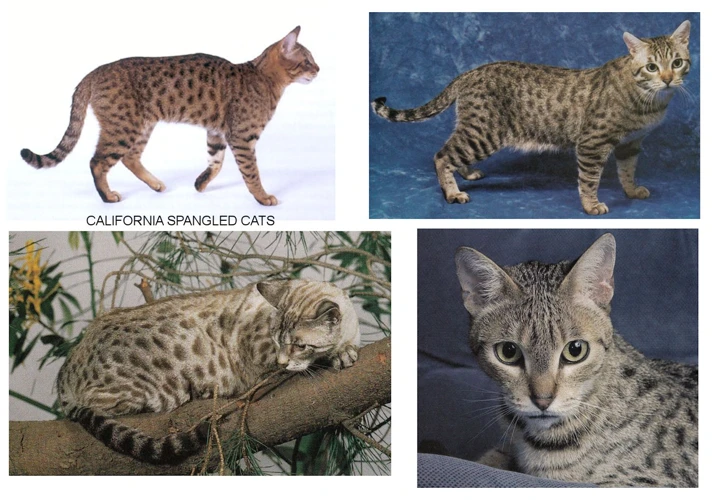
Breeding cats for specific traits is not a simple process, and it takes careful planning and strategy to produce desirable offspring. Developing a breeding strategy requires a deep understanding of genetics and the traits you want to produce in the offspring. This process involves selecting the right cats for breeding, determining inheritance patterns, and choosing the right breeding method. In this section, we’ll explore the different steps you need to take when developing a breeding strategy to ensure that you produce quality California Spangled cats with the desired traits. So let’s dive into the details of developing a successful breeding strategy.
Choosing Cats for Breeding
When choosing cats for breeding, there are many factors to consider. It is important to select cats with desirable traits that you wish to pass on to future generations. However, it is equally important to choose cats that are healthy and have no genetic abnormalities.
Physical Characteristics: Consider the physical characteristics that you find desirable in California Spangled Cats. This includes fur color, pattern, length, size, eye color, and body shape. Make sure that the cats you choose for breeding have these traits. It is also important to choose cats that have good bone structure and are well-proportioned.
Temperament: California Spangled Cats are known for their friendly and outgoing personalities. When selecting cats for breeding, make sure that both the male and female have good temperaments. This will ensure that the kittens are also friendly and well-socialized.
Health: It is important to select cats that are healthy and free from any genetic abnormalities. Before breeding, both cats should undergo a thorough health screening to check for any potential issues. This includes testing for feline leukemia virus (FeLV), feline immunodeficiency virus (FIV), and other genetic disorders that are common in cats.
Genetics: Understanding genetics is crucial when choosing cats for breeding. Breeders need to know the traits that are dominant and those that are recessive. This information will help them determine the probability of producing desired traits in future generations.
Once you have chosen the cats for breeding, it is important to keep detailed records of their lineage and genetic history. This will help you make informed decisions when selecting future breeding pairs.
| Factors to Consider | Description |
|---|---|
| Physical Characteristics | Fur color, pattern, length, size, eye color, body shape. |
| Temperament | Outgoing personalities. |
| Health | Free from genetic abnormalities and screening for infectious diseases. |
| Genetics | Understanding dominant and recessive traits. |
Understanding Genetics
In order to breed for specific traits in California Spangled Cats, it is essential to have a basic understanding of genetics. Here are some key concepts to keep in mind:
- Dominant and recessive traits: When it comes to genetics, traits can be dominant or recessive. Dominant traits are expressed even if the cat only has one copy of the corresponding gene, while recessive traits require two copies in order to be expressed.
- Genetic variability: Genetic variability is important when it comes to breeding for specific traits, as it allows for a broader range of traits to be expressed in cats. Inbreeding can reduce genetic variability and increase the likelihood of inherited diseases.
- Potential genetic disorders: Certain genetic traits, such as those that cause white fur, can also increase the likelihood of inherited disorders such as deafness. It is important to be aware of these potential issues when breeding for specific traits.
- Pedigree: Keeping track of a cat’s pedigree can help breeders to identify potential carriers of specific traits and avoid inbreeding. It can also help to identify desirable traits that may be passed down through specific lines.
- Testing: Genetic testing can be a useful tool for identifying potential carriers of certain traits or diseases. This can help breeders to make informed decisions about which cats to breed.
By understanding the basics of genetics and keeping these concepts in mind, breeders can work to develop breeding strategies that will help them to achieve their desired traits while maintaining genetic variability and minimizing the risk of inherited diseases.
Breeding Methods
Breeding methods are crucial in ensuring that the desirable traits are transferred successfully in California Spangled cats. Here are some of the breeding methods that breeders utilize to achieve the desired traits in their breeds.
Linebreeding: In line breeding, a breeder selects two cats that have the desirable traits and closely related genealogy. It is important to consider the genetics of the cats to ensure that the inbreeding coefficient is low. This method is used to preserve the desirable traits of a specific line, and it can also help to narrow down the number of characteristics that need improvement.
Crossbreeding: Crossbreeding is a method employed to introduce new traits into the California Spangled cats. The breeder selects two cats from different lines or breeds with different traits and crosses them to create an offspring that has a combination of the desired features. It is essential to select cats that have complementary traits to generate the desired results.
Outbreeding: Outbreeding involves breeding cats that are unrelated or distantly related. This method helps to maintain genetic diversity and eliminate the undesirable traits in cat breeds. It is also important to remember that genetic diversity reduces the chances of the offspring developing genetic defects.
Backcrossing: Backcrossing is a breeding method that a breeder uses to strengthen a particular trait in a breed. It involves breeding an individual cat with the desired trait with one of its parents or a closely related sibling. This method helps to reinforce the desirable trait, allowing it to become more prominent in future generations.
It is important to note that breeding methods must be used in combination with an in-depth understanding of genetics, breed standards, and feline health to ensure the best possible outcomes.
Ensuring Healthy Breeding
When it comes to breeding cats for specific traits, it is of utmost importance to ensure that the breeding process is healthy and sustainable. Breeding cats requires a lot of attention and care, and there are a number of steps that breeders must take to ensure that their cats are healthy and happy. In this section, we will explore some of the key steps that breeders should take to ensure healthy breeding. From veterinary care to maintaining a healthy environment, there are a number of measures that breeders can take to ensure that their cats thrive and produce healthy offspring. Let’s dive in.
Veterinary Care
Taking care of the health of your breeding cats is crucial for producing healthy and happy California Spangled kittens. Regular veterinary care is essential for maintaining optimal health in your cats and preventing the spread of diseases.
Here are some important aspects of veterinary care that you should consider for your breeding cats:
| Aspect of Veterinary Care | Importance |
|---|---|
| Regular check-ups | Regular check-ups with a veterinarian can help catch health issues early on, which can prevent costly and painful problems down the line. Aim for yearly wellness appointments at a minimum. |
| Vaccinations | Vaccinations prevent the spread of dangerous and deadly diseases, such as feline leukemia virus and rabies. Make sure your breeding cats are up-to-date on their vaccinations. |
| Parasite control | Parasites like fleas, ticks, and intestinal worms can cause serious health problems in cats. Keeping your breeding cats on a regular parasite control program can prevent these problems. |
| Disease testing | Testing your cats for common diseases, such as feline immunodeficiency virus (FIV) and feline leukemia virus (FeLV), can prevent the spread of these diseases within your breeding colony. |
| Nutrition counseling | A veterinarian can advise you on the best nutrition for your cats, which is especially important when breeding. Good nutrition can help prevent health issues and ensure healthy kittens. |
| Emergency care | Emergencies can happen, and having a plan in place for emergency veterinary care can save the lives of your cats and kittens. Make sure you have a trusted vet and emergency contact available. |
By providing your breeding cats with proper veterinary care, you can help ensure the health and well-being of your cats and the kittens they produce. Don’t skimp on veterinary care to save costs, as it can end up costing you much more in the long run.
Preventing Inherited Diseases
Breeding for specific traits in California Spangled Cats comes with the responsibility of ensuring that inherited diseases are prevented. Unfortunately, inherited diseases are common in most cat breeds, and California Spangled Cats are no exception. It’s crucial to understand how to prevent such diseases by taking some necessary precautions.
One of the ways to prevent inherited diseases in California Spangled Cats is through genetic testing. It is essential to have both parent cats tested for genetic diseases before breeding. Genetic testing will help identify carriers of different diseases and ensure that they are not bred together, which can lead to the offspring inheriting the disease. Thus, this will help in reducing the chances of passing down the disease to the kittens.
In addition to genetic testing, it is best to understand the medical history of both parent cats and their lineage. You can request medical records of both parent cats from their breeders or previous owners to learn more about their health history. Understanding their medical history can help you identify possible genetic disorders that might be passed down to the offspring.
Providing a healthy lifestyle and environment for your cats is crucial in preventing inherited diseases. A well-balanced diet, hygienic surroundings, and regular exercise are essential for your cats’ overall health. The environment should be clean, comfortable, and free from environmental toxins that can affect your cats’ health.
Additionally, regular veterinary check-ups and vaccinations are necessary to prevent inherited diseases in California Spangled Cats. Regular visits to the veterinarian will help detect and prevent any possible health issues before they become serious problems. Vaccinations help your cats fight off infections that may cause diseases, keeping them healthy and free from illness.
Here is a summary table of how to prevent inherited diseases in California Spangled Cats:
| Prevention Method | Explanation |
|---|---|
| Genetic Testing | Test both parent cats for genetic diseases to prevent them from breeding together. |
| Understanding Medical History | Request medical records of both parent cats to identify possible genetic disorders that might be passed down to the offspring. |
| Providing a Healthy Lifestyle and Environment | Offer a well-balanced diet, hygienic surroundings, and regular exercise for your cats. Keep their environment clean, comfortable, and free from toxins. |
| Regular Veterinary Check-ups and Vaccinations | Take your cats to the veterinarian regularly to detect and prevent possible health issues. Vaccinations help them fight off infections that may cause diseases. |
By following these prevention methods, you can ensure healthy breeding practices and reduce the chances of passing on inherited diseases to the offspring. Ultimately, it will help in breeding healthy and happy California Spangled Cats with specific traits that meet your breeding goals.
Maintaining a Healthy Environment
Creating and maintaining a healthy environment is crucial for breeding California Spangled Cats. Here are some steps that breeders can take to ensure their cats are kept in optimal conditions for breeding:
Cleanliness: Keeping the environment clean is the key to preventing the spread of diseases and infections. Regular cleaning of the breeding area, litter boxes, and cat beds is essential.
Temperature: California Spangled Cats are adapted to moderate temperatures and thrive in an environment that is between 60-80°F. Make sure to keep the breeding area at this temperature range to provide the best possible environment for the cats.
Lighting: Lighting is essential for the health and well-being of the cats and can also affect the breeding process. Encourage natural daylight in the breeding area to provide essential vitamins and minerals. Avoid overexposure to artificial lighting as it can impact a cat’s reproductive cycle and behavior.
Socialization: Interacting with the cats, especially during their early life stages, is vital to their socialization and overall development. Breeders should ensure adequate socialization and bonding with the cats as it affects their temperament and behavior.
Health: Providing regular veterinary care is necessary to ensure the cats’ health and well-being. Regular check-ups, vaccinations, and parasite prevention strategies should be implemented to avoid any health complications and maintain the cats’ optimal health.
By following these guidelines, breeders can be confident in their ability to maintain a healthy environment for breeding California Spangled Cats, which is essential for successful and sustainable breeding.
Conclusion
After understanding the specific traits of California Spangled cats and developing a breeding strategy, it is important to prioritize the health and wellbeing of the cats above all else. Ensuring that veterinary care is consistently provided, diseases are prevented through genetic testing and selection, and the environment is maintained to be clean and safe are key components to healthy breeding.
Breeding for specific traits requires a thoughtful approach and extensive genetic knowledge. Careful selection of cats for breeding that exhibit desirable traits can lead to the development of a strong and unique breed of cats. However, it is important to remember that breeding should always prioritize the health and wellbeing of the cats.
Developing a breeding strategy that takes into account the genetic history and background of a cat, as well as the desired traits, is crucial for success. Understanding the genetic basis of each trait can help breeders make informed decisions about which cats to breed and how to breed them.
Breeding methods such as inbreeding, line breeding, and outcrossing can have a significant impact on the success of the breeding program. It is important for breeders to carefully consider the potential risks and benefits of each method before making a decision.
Incorporating veterinary care into the breeding program is essential for maintaining the health of the cats. Regular checkups and vaccinations can prevent the spread of disease and ensure that the cats are in good health.
Preventing inherited diseases through genetic testing and selection is another important aspect of healthy breeding. Breeders should aim to develop a breed that is free of genetic diseases and conditions that can impact the quality of life of the cats.
Maintaining a healthy environment for the cats is also crucial for successful breeding. A clean and safe environment can prevent the spread of disease and reduce stress on the cats.
In conclusion, breeding for specific traits in California Spangled cats requires careful consideration of genetics, breeding methods, and veterinary care. Prioritizing the health and wellbeing of the cats is essential for successful breeding. With a thoughtful and informed approach, breeders can develop a strong and unique breed of cats that exhibit desirable traits while maintaining their overall health and wellbeing.
Frequently Asked Questions
Can you breed California Spangled Cats for specific fur types?
Yes, it is possible to breed California Spangled Cats for specific fur types, such as short or long fur. However, it is important to note that the breeding process for fur type can take several generations.
What are some common colors seen in California Spangled Cats?
Common colors seen in California Spangled Cats include brown, black, and silver tabby patterns.
Is it possible to breed for a certain size in California Spangled Cats?
While it is possible to select for larger or smaller cats in breeding, it is important to prioritize health and temperament over size.
Are California Spangled Cats typically friendly or aloof?
California Spangled Cats are known for being friendly and sociable, making them great pets for families.
How do you choose cats for breeding?
When selecting cats for breeding, it is important to consider their health, temperament, and physical characteristics. Choosing cats from different bloodlines can also help maintain genetic diversity.
What is the role of genetics in cat breeding?
Genetics plays a crucial role in cat breeding, as it determines the traits that will be passed down to offspring. Understanding genetics can help breeders make informed decisions about which cats to breed together.
What are some common breeding methods used in cat breeding?
Common breeding methods used in cat breeding include line breeding, outcrossing, and backcrossing. Each method has its own benefits and drawbacks, and breeders should choose the method that best suits their goals.
How can breeders ensure the health of their cats during breeding?
Breeders can ensure the health of their cats during breeding by providing regular veterinary care, selecting cats with good health histories, and creating a clean and safe environment for their cats.
Can inherited diseases be prevented in cat breeding?
Inherited diseases can be prevented in cat breeding through genetic testing and selective breeding. By choosing cats that do not carry the genes for certain diseases, breeders can reduce the risk of passing them on to offspring.
Why is it important to maintain a healthy environment during breeding?
A healthy environment during breeding is crucial for the health and well-being of cats and their offspring. A clean and safe environment helps prevent the spread of disease and reduces stress, which can lead to better breeding outcomes.

